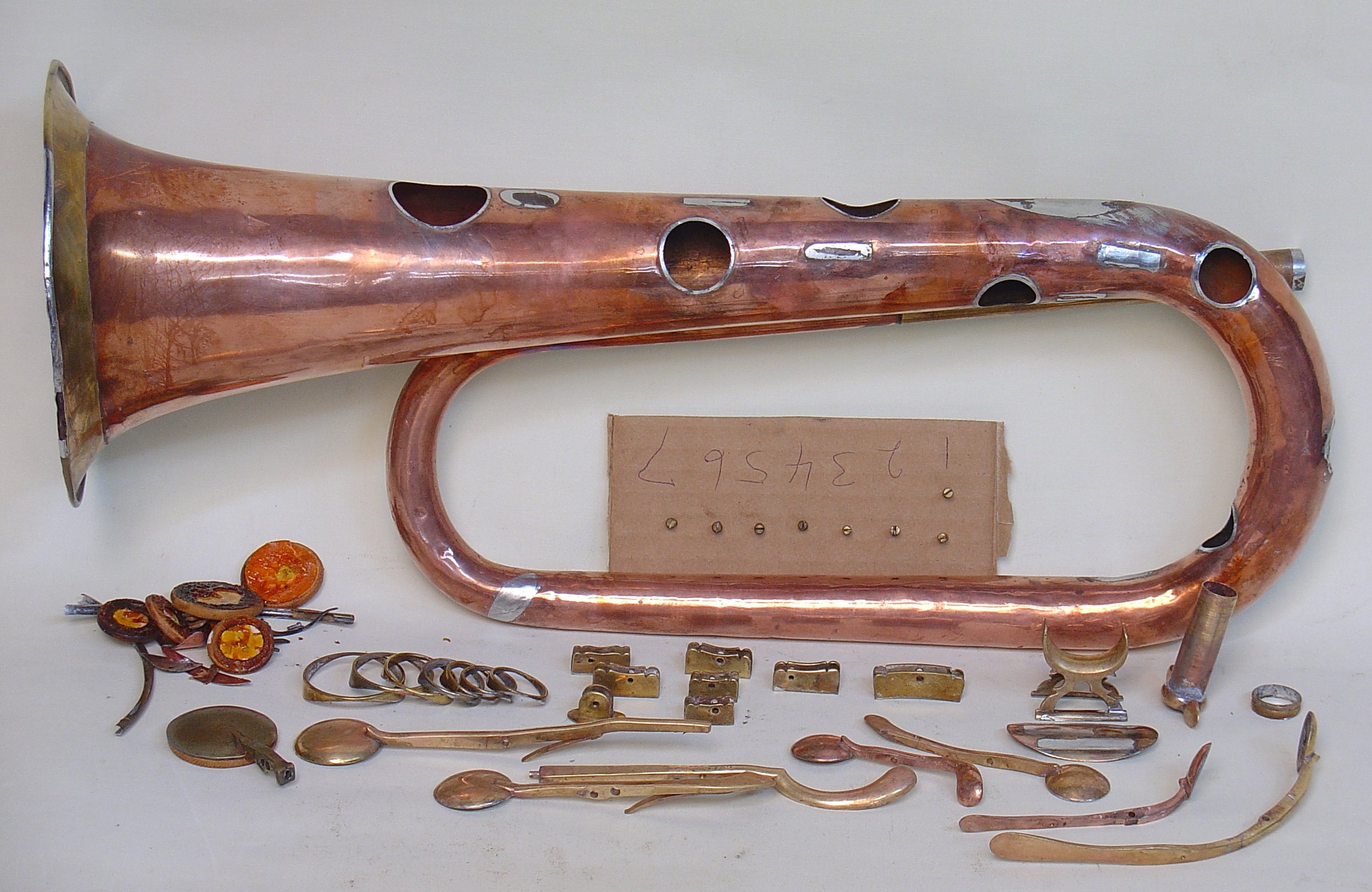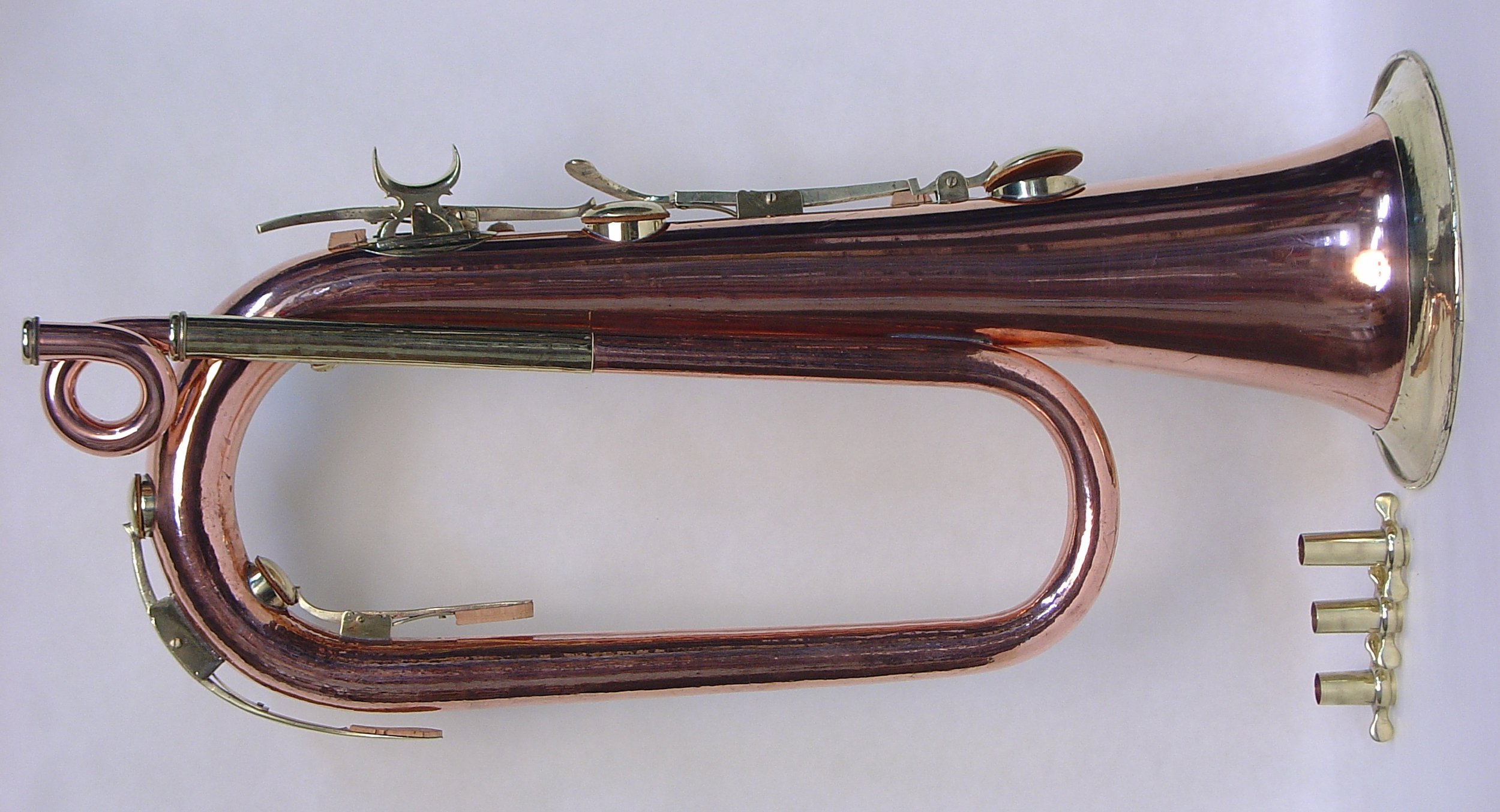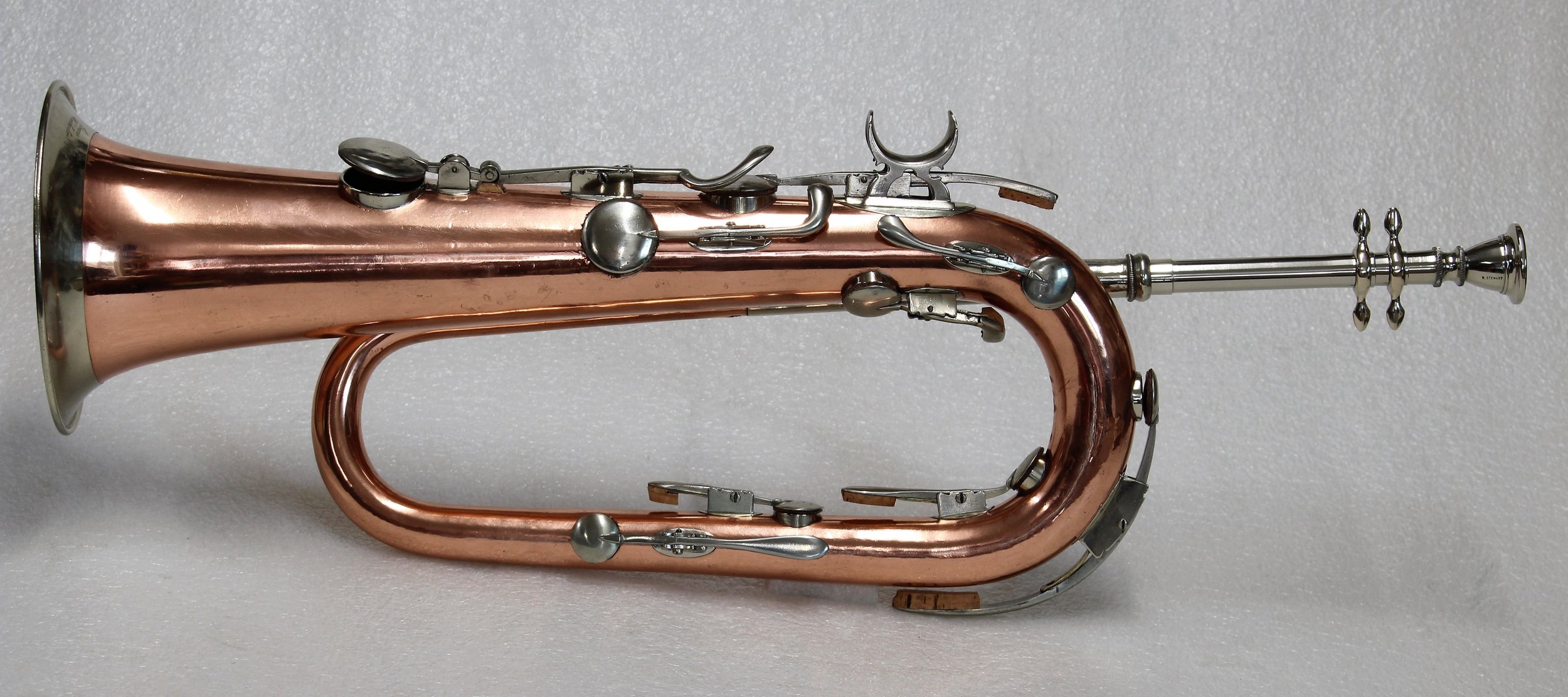Restoration of Two Graves Keyed Bugles
Graves & Co. of Winchester, NH was the most prolific maker of keyed bugles in the US, producing them in that town from 1838 until about 1849. After the move to Boston in 1850, they made very few as they were loosing demand to the valve brass instruments. Also, E.G. Wright had become the leading US maker in those years.
Chris Belluscio’s Graves Eb keyed bugle before restoration.
There is much demand for Graves' instruments today, however, and collectors pay high prices for them in any condition. The story here isn't so much about the restoration of these two bugles. That would be repetitive: They both needed a lot of work cleaning, removing dents, re-mounting parts, reproducing missing parts and setting up in for playing. These two instruments, both belonging to Boston trumpeter, Chris Belluscio, are an excellent illustration of how different two major restorations can be. I suspect that based on the "before" photographs, most readers would guess that the Eb bugle in the top photo would involve a larger job than the Bb bugle in the photo below.
Chris Belluscio’s Graves Bb keyed bugle before restoration.
The latter had previously been restored and was described as being in playable condition. Judging by what I could see, it must have been very badly damaged in the past. Dents had been roughly removed and numerous patches had been applied. I assumed that there were leaks under these patches, but about half of them were covering rough areas without leaks. Removing dents can be time consuming in a badly damaged instrument like the Eb bugle, but dealing with previous repairs is almost always more difficult. Dent removal goes even slower and parts that were made incorrectly are rarely usable in a more careful restoration.
Bb bugle torn down for restoration.
In this case, it appeared that several keys had been taken from a European made bugle and modified to fit. I was able to use only the touch piece end of one of these in reconstructing a correct replacement, however. Saxophone pads had been used in an attempt to make this playable. These never work very well because they require the support of the sides of key cups. Without this support, the thick felt underneath the leather deforms and won't maintain the seal against the chimney. Even worse, the keys need to be bent to accommodate the thicker pads. Occasionally, when I am bending the keys back they break, adding another step to the repair.
Bb keyed bugle by Graves & Co. after restoration.
Several keys were bent in very odd shapes, presumably from an attempt to straighten some damage. It appeared that the end of the mouthpipe had been reamed with a drill bit; I can't think of a reason for this other than to enlarge it. This left it ragged and shortened from the original. There's not much I can do to lengthen it without loosing even more of the original material, so I smoothed and cleaned up the end as best as I could and made the new crook to fit it.
Right side of restored Graves Bb keyed bugle.
Another detail that the average repairman who is not accustomed to dealing with keyed bugles may miss is that the narrow soldered joint where the tonehole chimneys attach are rarely secure. Solder deteriorates in instruments that are being played or suffer other harsh conditions and it doesn't take much physical damage to open a leak at the base of these chimneys. In my experience, only about one in thirty or so have a good enough joint. In about 50 keyed bugles that I have restored, I have only come across one or possibly two instruments in which all the toneholes were completely attached. The only way to ensure that the soldered joints are secure is to remove every chimney, clean the joint surfaces and reattach them with fresh solder. Graves bugles always seem to be excellent playing instruments when they are treated correctly and that was certainly the case here.
Below are photos of the Graves Eb keyed bugle during and after restoration. I had to make three new keys, tuning shank etc. but it was a more satisfying process. Both of these bugles are excellent players.
Eb keyed bugle during restoration.
Chris Belluscio’s Graves & Co Eb keyed bugle after restoration.
One more photo just for fun, is another Graves Eb keyed bugle after restoration. This one is very similar, but with nickel silver trim. For this one, it was decided to make the mouthpipe shank in the earlier style with bits for fine tuning. There are only two or three known with original shanks of this type and it is shown in the earliest display advertising for Graves bugles, shown in the following image.
Eb keyed bugle by Graves & Co. with nickel silver trim.
Advertising in the Boston post, May 24, 1842, showing a nine keyed bugle with bits for tuning.









